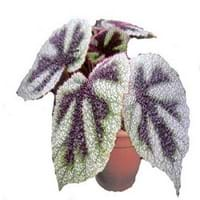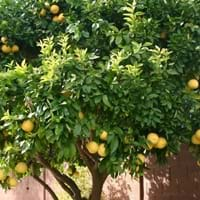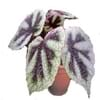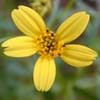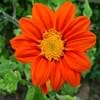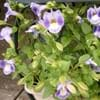Life Span
Perennial
Perennial
Type
Herbaceous Perennial
Fruit
Origin
Chile, Southeast Asia
South Asia, Southeast Asia
Types
Not Available
Not Available
Habitat
Mountain forests, subtropical regions, Terrestrial
Mediterranean region
USDA Hardiness Zone
11-12
8-10
AHS Heat Zone
12-5
Not Available
Sunset Zone
H1, H2, 24
Not Available
Habit
Clump-Forming
Spreading
Flower Color
Dark Blue
White
Flower Color Modifier
Bicolor
Bicolor
Fruit Color
Tan
Green, Lemon yellow, Yellow
Leaf Color in Spring
Light Green
Green
Leaf Color in Summer
Light Green
Green
Leaf Color in Fall
Light Green
Dark Green
Leaf Color in Winter
Light Green
Dark Green
Plant Season
Fall, Spring, Summer
All year
Sunlight
Full Sun
Full Sun
Growth Rate
Medium
Medium
Type of Soil
Loam, Sand
Rich
The pH of Soil
Acidic, Alkaline, Neutral
Acidic
Soil Drainage
Well drained
Well drained
Bloom Time
Early Summer, Late Spring
Spring, Summer
Tolerances
Drought
Full Sun
Where to Plant?
Container, Ground, Pot
Container, Ground
How to Plant?
Seedlings, Stem Cutting
Divison, Seedlings
Plant Maintenance
Medium
High
Watering Requirements
Keep ground moist, Keep the Soil well drained, Requires regular watering
Reduce watering once fruit are growing, Water daily during growing season
In Summer
Lots of watering
Lots of watering
In Spring
Moderate
Moderate
In Winter
Average Water
Average Water
Soil pH
Acidic, Alkaline, Neutral
Acidic
Soil Type
Loam, Sand
Rich
Soil Drainage Capacity
Well drained
Well drained
Sun Exposure
Full Sun
Full Sun
Pruning
Remove damaged leaves, Remove dead branches, Remove dead leaves
Prune to control growth, Remove dead branches
Fertilizers
10-10-5, All-Purpose Liquid Fertilizer
Fertilize in early to mid-summer, for fruiting plants, use high phosphorous content fertilizer
Pests and Diseases
Aphids, Mealy bugs, No serious insect or disease problems, Red spider mite
Aphids, Citrus foot rot, Citrus gummosis, Citrus leaf miner, Red blotch
Plant Tolerance
Drought
Full Sun
Flower Petal Number
Single
Double, Semi-Double
Foliage Texture
Fine
Coarse
Foliage Sheen
Matte
Glossy
Attracts
Birds, Bugs, Insects, Not Available
Ants, Birds
Allergy
Unknown
Anaphylaxis, Cough, Nausea, Rhinitis, Stomach pain, Swelling, Urticaria, Vomiting, wheezing
Aesthetic Uses
Bonsai, Borders, Landscape Designing, Mixed Border, Showy Purposes, Used for decorating walls, fences, gates, hedges, etc.
Farmland, Showy Purposes
Beauty Benefits
Not Available
Acne, Good for skin, Good for the Scalp, Improve skin tone, Moisturizing, Strong, beautiful hair
Environmental Uses
Air purification
Food for animals, Very little waste
Medicinal Uses
No Medicinal Use
anti-cancer, constipation, Digestive, Gastrointestinal disorders, Gout, Immunity, Jaundice, Respiratory Disorders, Rheumatoid arthritis, scurvy, Ulcers, Urinary problems, Weight loss
Part of Plant Used
Not Available
Fruits
Other Uses
Decoration Purposes, Showy Purposes, Used as Ornamental plant, Used for Landscaping
Cosmetics, Used as a flavouring in food, Used As Food, Used for its medicinal properties
Used As Indoor Plant
Yes
No
Used As Outdoor Plant
Yes
Yes
Garden Design
Bonsai, Container, Hanging Basket, Landscape
Edible, Fruit Tree, Tropical
Botanical Name
Begonia masoniana
Citrus limetta
Common Name
Angel's Wings, Butterfly Flower, Poor Man's Orchid
sweet lime, sweet lemon, sweet limetta
In Hindi
iron cross begonia
मौसम्बी
In German
Eisenkreuz Begonie
süße Limone
In French
croix de fer bégonia
Citrus limetta
In Spanish
el hierro cruzado begonia
limetta dulce, limón dulce mediterráneo, limón dulce y lima dulce
In Greek
σταυρό μπιγκόνια σιδήρου
γλυκό ασβέστη
In Portuguese
begônia cruz de ferro
doce de limão
In Polish
Iron Cross begonia
słodkie limonki
In Latin
ferrum crucem Begonia
dulcis ad cinerem
Phylum
Tracheophyta
Magnoliophyta
Class
Magnoliopsida
Magnoliopsida
Order
Cucurbitales
Sapindales
Family
Begoniaceae
Rutaceae
Clade
Angiosperms, Eudicots, Rosids
Not Available
Tribe
Not Available
Citreae
Subfamily
Not Available
Citroideae
Season and Care of Begonia masoniana and Sweet Lime
Season and care of Begonia masoniana and Sweet Lime is important to know. While considering everything about Begonia masoniana and Sweet Lime Care, growing season is an essential factor. Begonia masoniana season is Fall, Spring and Summer and Sweet Lime season is Fall, Spring and Summer. The type of soil for Begonia masoniana is Loam, Sand and for Sweet Lime is Rich while the PH of soil for Begonia masoniana is Acidic, Alkaline, Neutral and for Sweet Lime is Acidic.
Begonia masoniana and Sweet Lime Physical Information
Begonia masoniana and Sweet Lime physical information is very important for comparison. Begonia masoniana height is 60.00 cm and width 30.00 cm whereas Sweet Lime height is 800.00 cm and width 600.00 cm. The color specification of Begonia masoniana and Sweet Lime are as follows:
Begonia masoniana flower color: Dark Blue
Begonia masoniana leaf color: Light Green
Sweet Lime flower color: White
- Sweet Lime leaf color: Green
Care of Begonia masoniana and Sweet Lime
Care of Begonia masoniana and Sweet Lime include pruning, fertilizers, watering etc. Begonia masoniana pruning is done Remove damaged leaves, Remove dead branches and Remove dead leaves and Sweet Lime pruning is done Prune to control growth and Remove dead branches. In summer Begonia masoniana needs Lots of watering and in winter, it needs Average Water. Whereas, in summer Sweet Lime needs Lots of watering and in winter, it needs Average Water.
